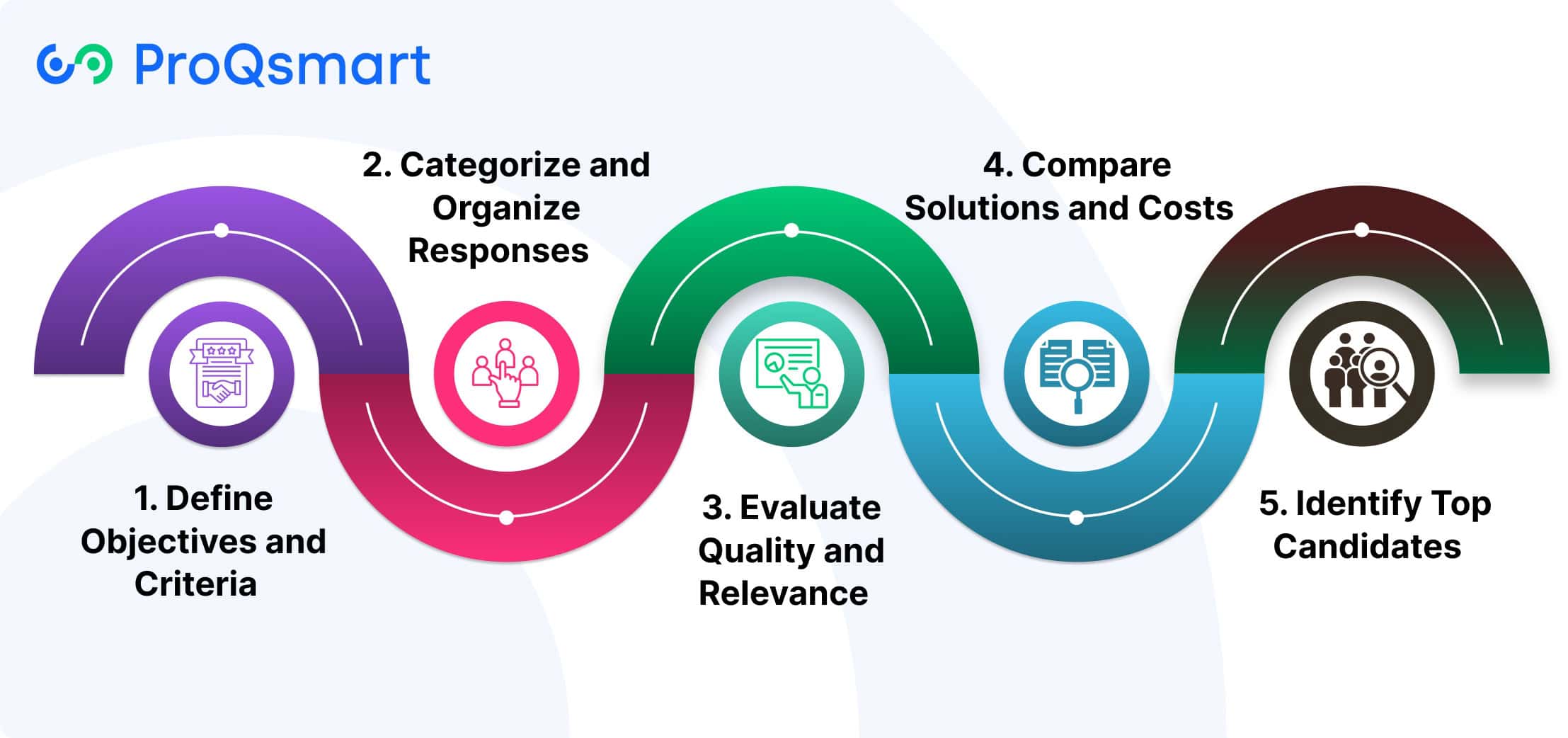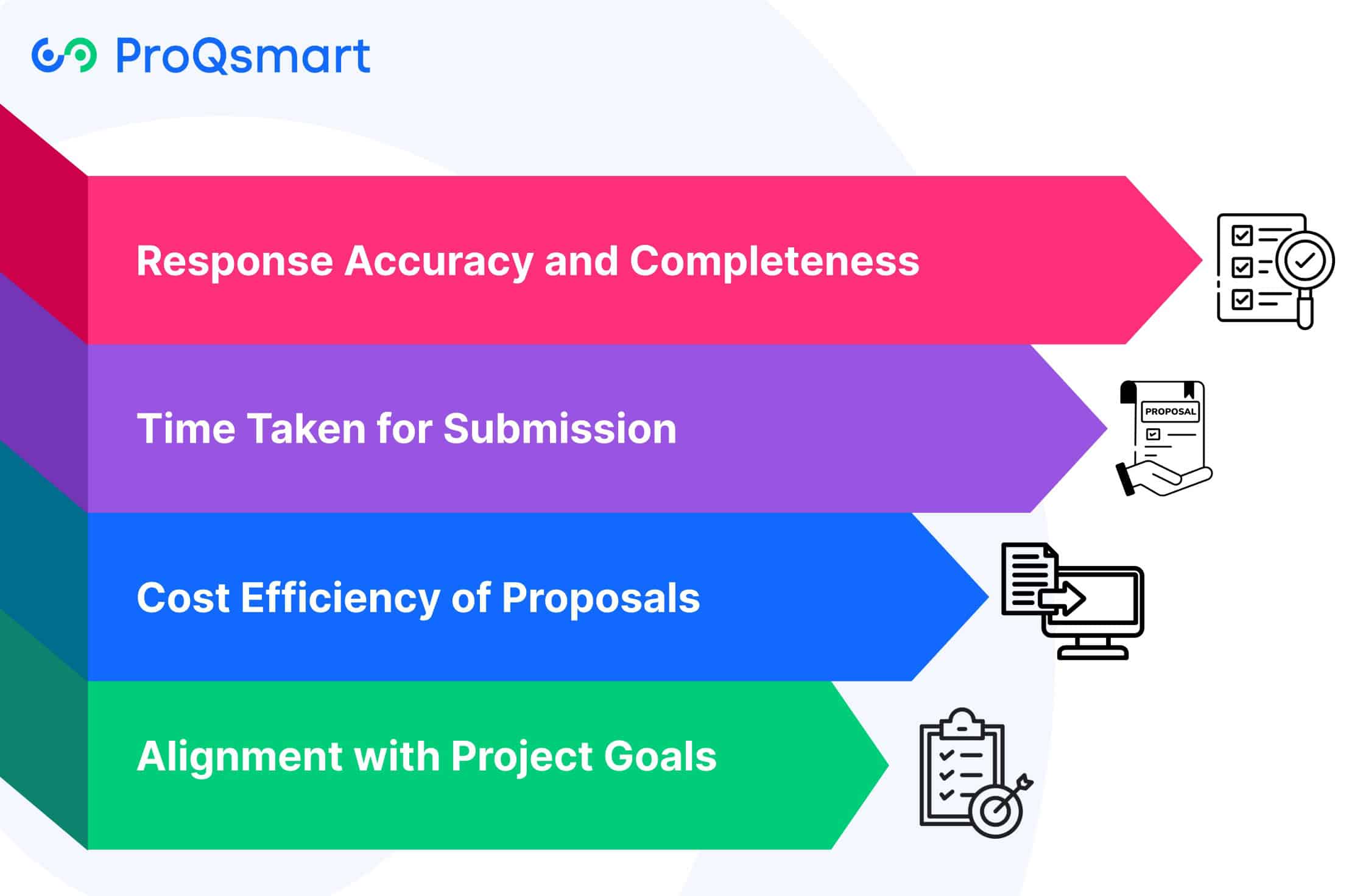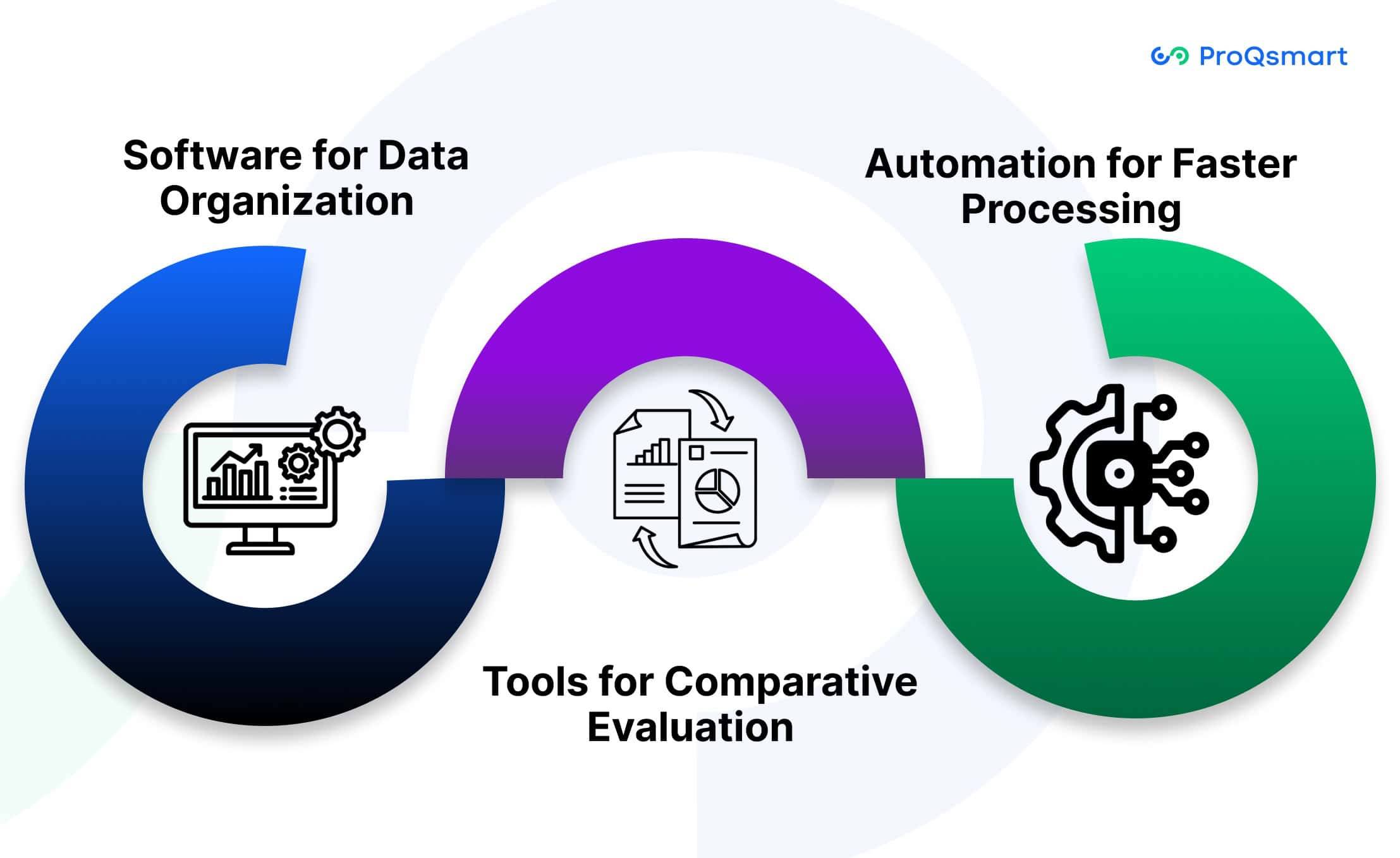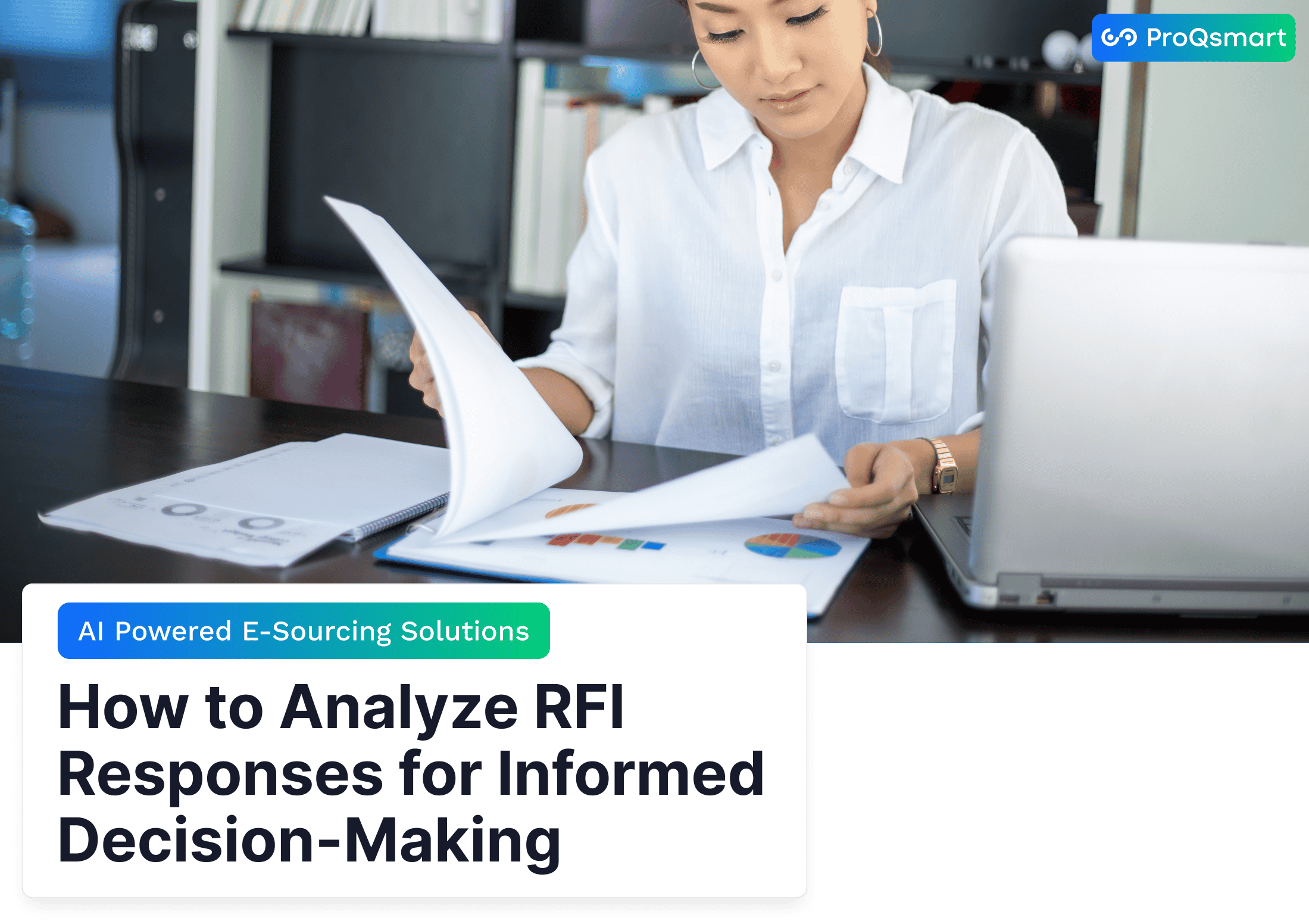An RFI, or Request for Information, is a more formal, yet still quite flexible, tool that is often used to get deep, rich, and varied information from potential vendors. In this way, it plays a pivotal role in aiding procurement professionals to conceptualize and contextualize the market’s capabilities, vendors’ offerings, and the potential solutions on offer.
RFIs play a critical role in the procure-to-pay or source-to-contract process, serving as an important building block for smart business decisions. Their informal nature makes them ideal for situations where the buyer seeks clarity on market trends or vendor expertise without formal negotiations.
RFIs help articulate the business needs, including integration requirements, use case scenarios, and management and operational preferences. That level of clarity helps guarantee that the vendor understands the buyer’s expectations from the outset.
RFIs extend their scope beyond just software. They’re often used to collect more detailed technical information, such as materials, specifications, design drawings, and standards. For example, a construction company may provide an RFI in order to explore various material solutions.
They might evaluate compliance standards before advancing to a Request for Proposal (RFP). This step is critical, as RFI responses frequently inform later procurement steps, creating a path that can lead to successful vendor selection.
Key Components of RFI Responses
Having a solid Request for Information (RFI) response is key. It forces vendors to provide insightful, actionable, and meaningful insights directly related to your organization’s goals and objectives. By structuring RFIs clearly and concisely, you enable vendors to focus on what matters most—delivering solutions that align with your goals.
Here are the key components to look for in RFI responses, detailed to provide the depth and breadth they deserve.
Company Overview and Background
The first section of an RFI response should include a comprehensive company overview to help establish the vendor’s credibility. This should be a natural home for any high-level, foundational information such as the history, mission, and core values of the company.
Vendors should further emphasize experience and past projects that are relevant, especially in terms of scope and/or industry. For instance, in construction industry, a vendor focusing on green building materials might highlight their part in a new LEED-certified building.
It’s key to understand the vendor’s market position. Learning if they are an industry leader or a niche specialist gives you insight into their potential to address your needs. Providing client references provides even more assurance, giving you the ability to check on their capabilities and history of successful work from their past clients.
Project Requirements and Objectives
Clear articulation of project goals helps ensure that all vendors have a clear understanding of the scope and purpose of the initiative. Responses should discuss the ability to meet specific requirements such as integrations with existing software or hardware, management protocols, or unique use cases.
For example, if you are procuring a supply chain solution, the vendor should address how their solution can work with your current inventory systems. Vendors should feel free to call out constraints or limitations as well, be it resource availability, compliance considerations, or other constraints to set reasonable expectations.
Proposed Solutions and Approaches
This critical section is about judging the vendor’s capacity to deliver creative, workable solutions specifically designed to meet your requirements. Vendors should outline their approach and procedures, focusing on how they’ll be able to provide documented value.
For example, a new software provider might describe the use of a phased implementation strategy that stages the software’s rollout to reduce downtime. Including relevant case studies or examples of similar projects is even better and shows they know how to fulfill your needs.
These types of insights allow you to gauge their technical expertise and problem-solving capabilities holistically.
Implementation and Execution Plans
Execution plans would require clear timelines with major milestones and due dates that would promote an open process and responsible execution. For instance, a vendor could propose a 12-week timeline for software implementation, providing weekly reports on progress.
Embed resource allocation strategies to illustrate the vendor’s operational efficiency. To illustrate, hire or assign a dedicated project manager to drive this home. Comprehensive risk management plans, including plans for mitigating risks of delays or problems, are key to building confidence.
Vendors should be straightforward about their communication methods. They’ll need to set up consistent meetings and offer one clear point of contact to maintain smooth communication as the project unfolds.
Steps to Analyze RFI Responses

A thoughtful, systematic approach can help make your decisions and procurement strategies more strategic and equitable to better align with your organization’s goals, particularly when analyzing RFI responses related to critical initiatives and life safety solutions.
1. Define Objectives and Criteria
Begin by establishing specific goals that align with the project’s goals. For example, if sustainability is an important consideration, make sure it’s reflected in the goals. Create detailed evaluation criteria including vendor experience, technological capabilities and fit with project timeline.
This step is important because it helps to keep things fair while analyzing the data. Objectives must further the larger intent of the project as well. For instance, in a construction project, criteria could be a vendor’s ability to execute and maintain large operations.
Share and communicate these objectives with all stakeholders to keep an open dialogue and ensure collaborative partnerships.
2. Categorize and Organize Responses
Categorizing responses into broad themes makes it easier to compare apples to apples. Utilize intuitive tools like spreadsheets or AI-driven platforms like ProQsmart to make this process faster and easier.
Group data according to the same standardized themes such as technical solution, pricing, and delivery timeline. ProQsmart’s automated workflows and real-time collaboration features eliminate guesswork, saving time and improving accuracy.
Having a standard review format reduces mistakes and helps make better choices.
3. Evaluate Quality and Relevance
Score Responding Vendors. Score each responding vendor against the defined criteria. For instance, if a vendor’s offering doesn’t specify how it ensures regulatory compliance, mark it for further questioning.
ProQsmart’s supplier performance monitoring can help you find the most reliable candidates by reviewing historical performance data.
4. Compare Solutions and Costs
Develop a solutions matrix, including pros/cons, to break down cost comparisons. Consider cost-effectiveness, delivery time, and total cost of ownership.
Upfront costs are definitely important, but you need to look at the overall value, like what you’d save in future maintenance costs with a higher-quality solution.
5. Identify Top Candidates
Lastly, whittle down the list to your top vendors by ranking them according to how well they align with your objectives.
ProQsmart makes this step easy by automating vendor pre-qualification and delivering transparency to the evaluation results. Pay attention to vendor reputation and include follow-up interviews in your schedule to narrow down to your final selection.
Metrics for Evaluating RFI Responses

Regardless of the specific criteria, evaluating RFI responses should be done with an eye towards ensuring the best and most informed decision. Through understanding these key metrics, procurement professionals can better evaluate the potential impact of responses and ensure they best fit the organization’s goals.
Below, we dive into some key metrics you should look at.
Response Accuracy and Completeness
The truthfulness and thoroughness of submissions are critical for robust evaluation. Every single one of those responses needs to address the RFI criteria in a targeted way, with detailed and targeted data. Lack of specifics or clear evasiveness can hold up smart decisions.
If a vendor misses the mark on a key compliance point, that could be a telltale sign that they just aren’t ready yet. Providing vendors with incentives to provide clear, concise responses will help you make apples to apples comparisons. As part of a long-term planning strategy, accurate data can enable organizations to better align RFIs with organizational growth strategies and desired market positioning.
Time Taken for Submission
Submission timelines are another important measure. Responses submitted on time are essential to keeping the project moving forward. Measuring response times against industry benchmarks gives you a better understanding of vendor reliability.
Late submissions can severely undercut the larger procurement schedule, causing bottlenecks. A quicker evaluation process is certainly attainable when vendors respect the need for prompt communication. Platforms such as ProQsmart reduce workflows significantly, increasing speed and efficiency by as much as 80% for first-time users.
Cost Efficiency of Proposals
By thoroughly analyzing cost structures, you can get a clear sense of the financial viability of any given proposal. While competitive pricing is a key metric, hidden expenses such as fees after selection need to be factored in as well.
Being transparent with pricing builds trust and leads to long-term partnerships. For example, with ProQsmart’s AI-driven tools, procurement professionals can quickly identify opportunities to save costs, all while keeping them compliant and aligned with their organization’s budget.
Alignment with Project Goals
The bedrock of evaluating RFI responses. Responses should be tailored to the project goals and adjusted based on the needs of the organization. Vendors that present custom-crafted solutions are a sure sign of a better fit, especially in the case of high-value opportunities such as multi-year contracts.
ProQsmart’s tools deepen and streamline supplier collaboration, helping to make sure suppliers’ offerings contribute positively to your core goals.
Tools for Streamlining RFI Analysis

Having the right technology can help firms effectively filter through a large amount of data, analyze responses, and automate workflow processes, particularly in the financial services industry. By utilizing innovative solutions, procurement teams can increase efficiency and reduce repetitive tasks, enabling them to confidently respond to information requests and make informed decisions.
Software for Data Organization
Specific RFI management software streamlines the entire process, allowing you to quickly sort through data with customizable templates and built-in reporting features. These tools are highly configurable, enabling users to customize forms to fit the unique needs of each project, capturing the most relevant information for analysis.
Integrating with current procurement systems increases efficiency by automatically connecting workflows. At the same time, intuitive front-end platforms facilitate communication between team members. Tools like ProQsmart provide that single source of truth for RFI tracking.
Perhaps more importantly, it offers real-time updates, which greatly minimize the chances of mistakes and stale data. Teams can find and track RFIs with ease, allowing them to avoid wasted hours and energy.
Tools for Comparative Evaluation
Evaluation matrices and scoring systems are key to being able to compare vendor responses side-by-side in a quantitative way. Cloud-based platforms that facilitate team collaboration make it easy to get real-time input, creating a more holistic view of each vendor’s offerings.
Tools like ProQsmart help streamline this process with supplier performance monitoring built into their features, which makes it easier to evaluate and monitor vendor reliability. Collaborative platforms further improve transparency, offering a clear and easily understandable framework for decision-making.
Automation for Faster Processing
By automating the time-consuming manual tasks, automation accelerates the process of analyzing RFIs. Tools powered by AI can personalize templates, pull data from previous RFIs, and even issue automated reminders to vendors that require additional follow-up.
Tools like ProQsmart, for instance, use AI to help save time by streamlining workflows, automating document management, and better aligning procurement with budgetary needs. Together, these features guarantee timely, accurate processing so teams can reallocate their time to more strategic initiatives.
Importance of Clear Guidelines in RFIs
By developing easy-to-follow, organized guidelines for your RFIs, you’ll save time and avoid headaches for everyone involved. They serve as a bedrock for efficient communication between all stakeholders so that projects can move forward in a timely manner.
Clear RFIs help avoid common pitfalls, such as misinterpretations, delays, and errors, which can otherwise hinder project timelines and outcomes. By providing clear guidelines from the start, organizations can foster better quality and more relevant vendor responses.
Setting Clear Expectations for Vendors
Creating clear guidelines makes certain that vendors know what is expected of them, and they provide accurate responses. Providing clear specifications on formats, like requiring the use of standard templates, creates uniformity.
Being upfront about what will be evaluated helps build trust with vendors and motivates them to focus their responses to your project objectives. Giving a deadline is just as important, if not more so, because it creates urgency for on-time submissions, limiting delays before they happen.
A clear communication channel gives vendors an opportunity to ask questions and clear up any confusion, leading to fewer errors and much more precise submission.
Ensuring Consistent and Relevant Responses
Standardized templates help save time when it comes to developing responses while guaranteeing that all submissions cover the most important questions. By encouraging vendors to hone in on relevant details you avoid the boilerplate responses that rarely provide useful insights.
Regularly reviewing and updating guidelines helps to ensure they stay relevant, and allows agencies to adapt them to address new business needs, priorities, or challenges. For example, providing clear references and descriptions on the specific requirements in RFIs allows vendors to accurately evaluate and respond with the right solution.
Benefits of Structured Formats
Structured formats allow for quicker, more convenient comparisons across responses, which can save significant time during evaluations. They eliminate a great deal of the ambiguity, helping ensure that vendor submissions are more on-target and accurate.
Visual aids, such as tables, help drive home that clarity, making the information even easier to process. Platforms such as ProQsmart automate workflows, manage documents, and foster collaboration, keeping RFIs efficient and focused on the overall project objectives.
Making Better Vendor Decisions with RFIs
Responses to Requests for Information (RFI) are central to helping procurement teams make more strategic vendor decisions. By using the information obtained to make informed decisions, organizations can ensure that their selections better fit overarching objectives, increase efficiency, and reduce potential risks.
RFIs are an important first step, but they’re the foundation of any informed decision and the key to realizing long-term success.
Linking Analysis to Strategic Choices
By thoroughly analyzing RFI responses, procurement teams can link vendor selection to the organization’s strategies in a measurable way. Selecting vendors that match your mission and values helps foster strong, productive partnerships and lays the foundation for mutually beneficial outcomes.
For instance, if they want sustainability to be a core priority, RFIs can help them find suppliers with eco-friendly practices. Further, taking into account future growth requirements makes sure that vendors you choose will be able to grow alongside your enterprise.
RFIs further allow procurement teams to establish baselines for pricing and services, providing them with additional leverage during negotiations and improving competitive advantage.
Reducing Risks in Vendor Selection
Thorough RFI evaluations significantly lower risks by offering a clear understanding of vendor reliability and stability. For instance, assessing financial health and past performance through RFIs can prevent potential challenges.
By acting on insights, organizations can avoid costly mistakes, saving up to 80% of expenses. ProQsmart’s tools streamline this process by automating workflows, ensuring compliance, and providing transparency in vendor assessments.
Achieving Long-Term Project Success
When done effectively, these RFIs help build healthy working relationships with vendors, ensuring the success of your project. By prioritizing clear communication and a commitment to continuous improvement, organizations can better position themselves to meet rapidly evolving needs.
By facilitating continued communication, tracking supplier performance, and keeping procurement initiatives on budget, ProQsmart ensures that initial excellence continues.
Conclusion
RFIs represent a crucial step beyond mere formality; they are essential for delving into granular details, identifying optimal vendors, and establishing a foundation for well-informed decisions. By emphasizing specific guidelines, detailed metrics, and leveraging appropriate digital tools, organizations can transform RFI responses into insightful and impactful resources. This approach reduces both time expenditure and potential risks, while simultaneously ensuring that strategic decisions align with long-term objectives.
Investing in a robust RFI process extends beyond simple procedural compliance. It fosters vendor trust and accountability, contributing to enhanced outcomes and responsible resource allocation. By dedicating time to refine your RFI strategy, you can realize significant benefits, including more effective operations and deeper, more productive collaboration.
To discover how to elevate your procurement strategies and transform your RFIs into instruments of transparency and value, explore ProQsmart. Book a demo today to learn how our comprehensive solutions can optimize your RFI process and drive superior results




